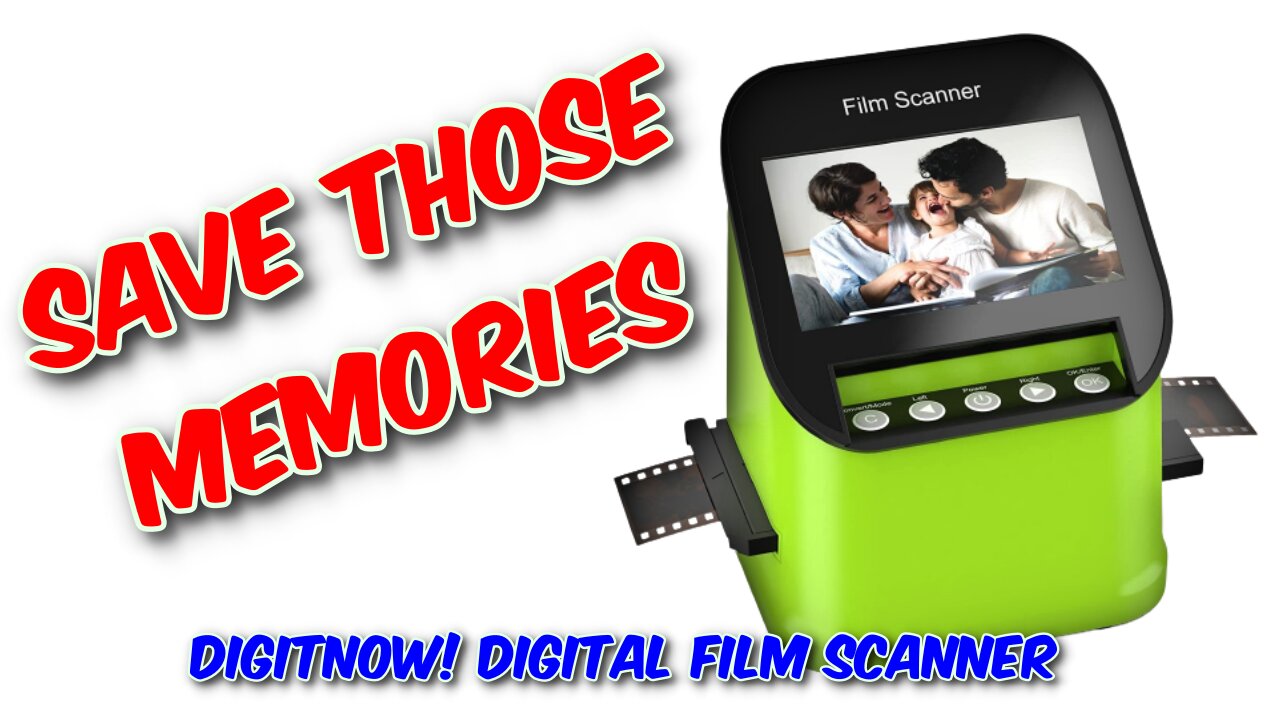Premium Only Content

DIGITNOW! Digital Film Scanner Review
DIGITNOW! Digital Film Scanner Review
https://youtu.be/ntn9WX7HEXY
More Info and Purchase: https://tinyurl.com/2m2o5xgh
Buy Me A Coffee: https://www.buymeacoffee.com/marcoscu6
Blog: https://marcoscucom.wordpress.com/2023/03/08/digitnow-digital-film-scanner/
My partner needed a reasonably priced scanner to digitise a load of ancient photos and Kodachrome slides. Looking around a rather crowded market it seems there are loads of sub £100 scanners which all seem to contain the same 14 MP scanning technology. They all scan natively at 14MP with interpolation to 22 MP with the main difference being in the casing, size of screen and price. This one was about mid-range at £89.99 with a larger than normal 4.3-inch screen and HDMI output as selling points.
In the box, you get the scanner and a range of film mounts to accommodate all the popular film sizes from 35mm downwards: 35mm Slide Holder, 35mm Neg Holder, 110 Slide Holder, 8mm/Super 8 film holder, and 110 neg holder. Also included are a cleaning brush, UK power supply and a USB to mini USB power/data cable and a well printed but rather over complicated user guide. Build quality is entirely from plastic and is a long way from premium but is not too bad for the price.
Below the screen at the front of the scanner are a poorly placed row of buttons for Mode, Back, Power, Forward and OK. Press the power button to turn on and the screen shows Capture Mode. Press the Forward button to scroll through Playback Mode, Film Type selection, Format, Resolution selection, Language selection, and USB Mode.
Operation is simple enough but slow as it needs to be done frame by frame. After selecting film type and resolution, enter Capture mode and press OK, then press Mode and press OK to Scan. The file is saved to the SD card. The device can be used with SD cards formatted as FAT32 up to 128gb in size. No card is included with the scanner.
Although the scanner will scan at 22MP per image this is through interpolation and only increases the image size and not the resolution. It is quicker and easier to scan at the native 14MP resolution and then change the size if required on the computer.
There are exposure and colour correction options available on the scanner itself but these are pretty basic and lost when the device is restarted. I usually wait until I have a good number of images scanned to the SD card and then transfer them to my computer to enhance and correct them. Connect the USB cable to the computer and switch the scanner to USB mode to automatically mount the SD card to the computer desktop as a drive.
The results are as I expected. Medium quality with pronounced colour casts and fairly low resolution. If all you want is to digitise some images for posting to the internet then or for general use then this will be OK. If you want a professional level archival scanner then keep on looking and expect to pay several times this price.
Music: YouTube Audio Library: Unicorn Heads:My Train's A Comin'
-
 28:31
28:31
America First Policy Institute
21 hours agoAmerica First Policy Institute Gala Donald Trump, Elon Musk & Sylvester Stallone Ignite the Movement
29.1K15 -
 4:36
4:36
BIG NEM
11 hours agoThe Sad Truth About How Our Cannabis is Grown
36.2K14 -
 3:07:08
3:07:08
Price of Reason
16 hours agoMainstream Media FEARS Extinction! Gladiator 2 Review! New DnD SCANDAL!
62K9 -
 8:23:44
8:23:44
Fresh and Fit
12 hours agoIsrael-Hezbollah Ceasefire & Reacting To Death Threats On X
161K37 -
 1:11:10
1:11:10
Steve-O's Wild Ride! Podcast
5 days ago $10.31 earnedDusty Slay Went From Selling Pesticides To Having A Netflix Special - Wild Ride #244
57.4K3 -
 1:16:02
1:16:02
CocktailsConsoles
10 hours agoBE PART OF THE GAME!!| Death Road to Canada | Cocktails & Consoles Livestream
39.7K3 -
 8:19:28
8:19:28
Phyxicx
12 hours agoWe're streaming again! - 11/26/2024
33.8K -
 6:49:31
6:49:31
GamingWithHemp
12 hours agoHanging with Hemp #103
49.8K3 -
 21:24
21:24
DeVory Darkins
1 day ago $13.01 earnedElon Musk and Tucker Carlson SHATTER Left Wing Media
48.5K45 -
 15:13
15:13
Stephen Gardner
9 hours ago🔥Breaking: Trump JUST DID the UNEXPECTED | Tucker Carlson WARNS America!
45.7K99